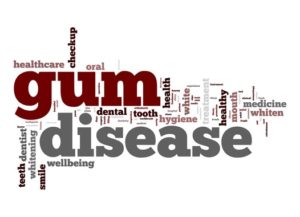 Gum disease, which is caused when oral bacteria attack the gum tissue and cause inflammation, is a progressive condition. That means that gum disease becomes more severe as time goes on if it is not treated. In the most severe instances, this can result in tooth and bone loss.
Gum disease, which is caused when oral bacteria attack the gum tissue and cause inflammation, is a progressive condition. That means that gum disease becomes more severe as time goes on if it is not treated. In the most severe instances, this can result in tooth and bone loss.
The mildest form of gum disease is gingivitis, and it is marked by symptoms like redness, swelling, puffiness or bleeding of the gum tissue. The bleeding may only occur while brushing and flossing, but that is still evidence of a disease process. Gingivitis is the most easily treated form of gum disease, as it can usually be resolved with a thorough professional dental cleaning to eliminate bacteria in the vicinity of the gumline.
If gingivitis is not treated, the gum disease will progress to periodontitis. Increased inflammation in this stage may result in pockets developing between the teeth and gums or shrinking or receding of the gum tissue. Patients may also notice their teeth feeling looser. With advanced periodontitis, the effects of tooth and bone loss can be devastating to the smile.
It is worth noting that periodontitis requires more invasive intervention by a periodontist, who is a specialized dentist who treats gum disease. When patients have periodontitis, the periodontist may need to perform a root planing and scaling, which cleans underneath the gum line and eliminates bacteria. Gum surgery, such as grafting or pocket reduction surgery, may also be necessary. If the tooth cannot be saved, the patient may need to have dental implants placed.
Patients who have experienced an initial episode of gum disease are at risk for a relapse, so they should continue to be monitored by a periodontist from time to time so that any recurrence can be identified and treated as early as possible. Of course, patients should do everything possible, including maintaining a robust home oral hygiene routine, to minimize the presence of disease-causing bacteria and reduce their chances of a relapse.
Monitoring your gum tissue for signs of concern is your best defense against the serious consequences of advanced gum disease. If you notice any mild symptoms like bleeding or redness in your gum tissue, call our office to be scheduled for an evaluation and possible treatment.






